I am a person that appreciates space, views, a horizon that stretches, which is probably why I like the middle of the ocean so much (See my book, Voice of a Voyage: Rediscovering the World During a Ten-year Circumnavigation for more about that as well as much about the forty-one countries we visited during that ten years). Needless to say I fell in love with the Altiplano of Peru.
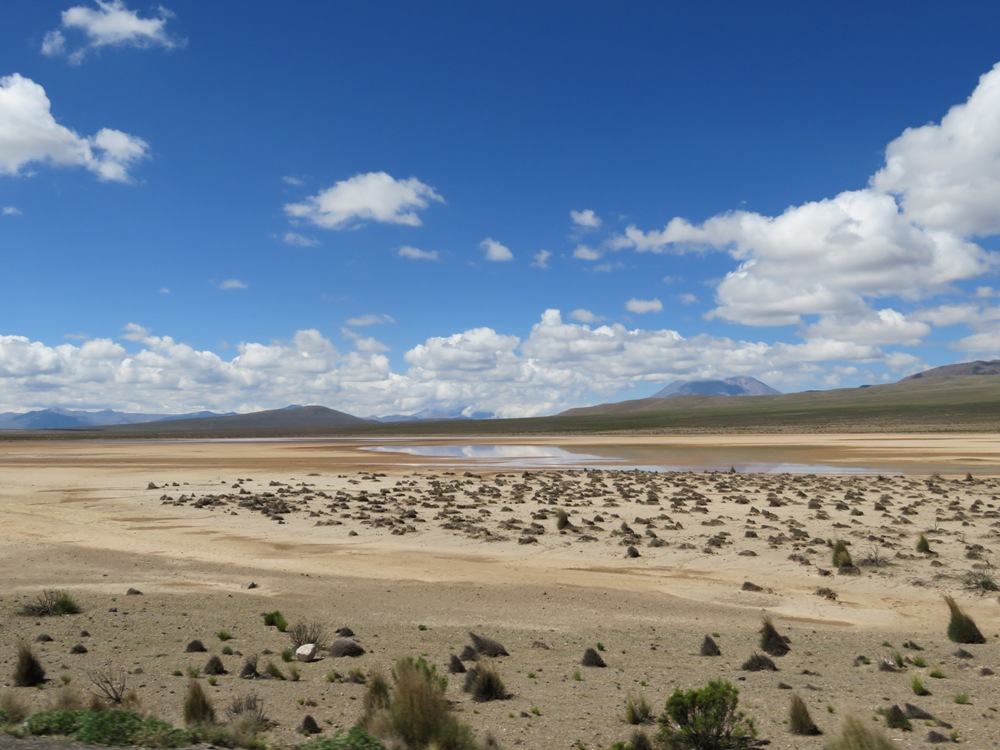
Vista in Peru’s Altiplano.
The Inca may consider Cuzco the navel of the world, (more on that in forthcoming blogs) but to me the Altiplano could easily be imagined as the center of the world. It’s as if everything looks out from here. It is about 600 miles (965 km) long, although the northern part has more rainfall and is less inhospitable. It’s average elevation is 12,300’ (3750 m) but the road we traveled included a long pass at 16,101’ (4910 m). We were above 16,000’ for some time. Although I live at 8,200’ (2499 m), this continuous exposure to these exceptional heights took their toll on me and despite prophylactics I got serious altitude sickness.
The vicuña are native here and are the smallest of the six camalid species, four of whom live in Peru (add the guanaco, alpaca, and llama). Both the guanaco and vicuña are found in the Altiplano, but guanacos tend to be more common in Patagonia. Domestic alpaca herds also graze there in some of the “lower” areas (lower being 10,000 to 13,000’). The vicuña quickly became my favorite, partly because of where they live and manage to survive, and partly because of their fragile appearance—a contradiction in a perceptual sense. They reminded me of the particularly endearing and graceful dik-diks in Kenya, although they are less than 2’ (0.6 m) high at the shoulder, thus a little smaller than the vicuña, which are up to 3’ (0.9 m) at the shoulder.
“Like guanacos, vicuñas are wild, with temperaments that preclude domestication,” according to the online Britannica Encyclopedia. While the Incas would capture them, shear them for their excellent wool, and occasionally kill a few for food, it wasn’t until the Spanish came and killed them in large numbers that their numbers decreased to the point of almost extinction. In spite of legal protection starting in the 19th century, poaching decreased their numbers from approximately 1 million during the Inca reign to 10,000 in 1960. Increased awareness and conservation is bringing them back so that now there are an estimated 80,000.
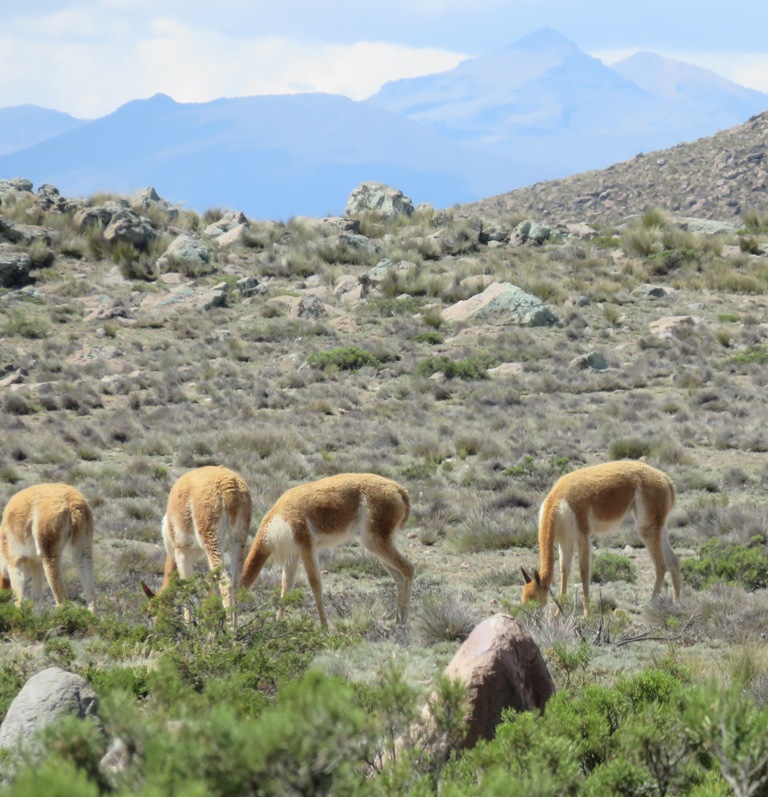
Vicuña grazing in the Altiplano; this was at about 16,000′ (4877 m).
The Altiplano can be extremely hot during the day, freezing at night, and a difficult environment in terms of what there is to eat. But, of course, the vicuña is specifically adapted for this with its thick wool longer on the chest area that traps warm air close to its body. I also learned that it walks on the soles of its feet so it can use its toes to grip the loose gravel and keep it steady on the uneven, rocky ground and mountain sides, and that this minimizes erosion on the thin soil required for the tough bunch grasses that it eats. Those bunch grasses are really tough, but the vicuña’s bottom teeth continually grow to enable it to eat these grasses without wearing out. I found that a fascinating evolutionary fact.
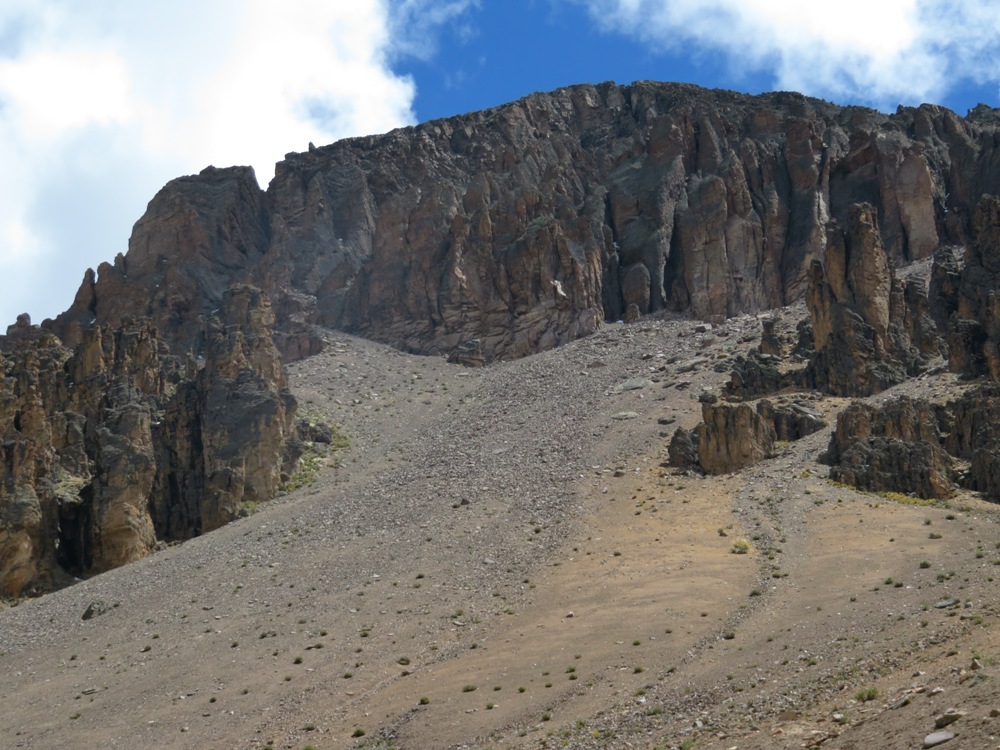
The Altiplano is a desolate, awe-inspiring, landscape that feels venerable, but if you close your eyes then reopen them, it might be gone.

Altiplano view.
COLCA CANYON
Most people go here for the depth and also the condors. We did not even go to Chivey, but bypassed that and headed out to Cabanconde, which feels as if it is the end of the road. It more or less is. The elevation there is 10,784’ (3287 m) and it’s very close to the condor viewing sight, but also a pleasant, local town without the usual tourist bustle.
The canyon, which we only looked down on from the rim due to my illness, is 13,640’ (4160 m) deep. The Grand Canyon in Arizona, which I have hiked down (and up) is only 6,000’ (1829 m). Unlike the Grand Canyon, which is quite spectacular in terms of its geology and color and is more interesting to look down (or better yet, hike down) into, Colca Canyon, to me, was more spectacular as you looked up to the high terraced mountain sides. And then, of course, there were the condors.
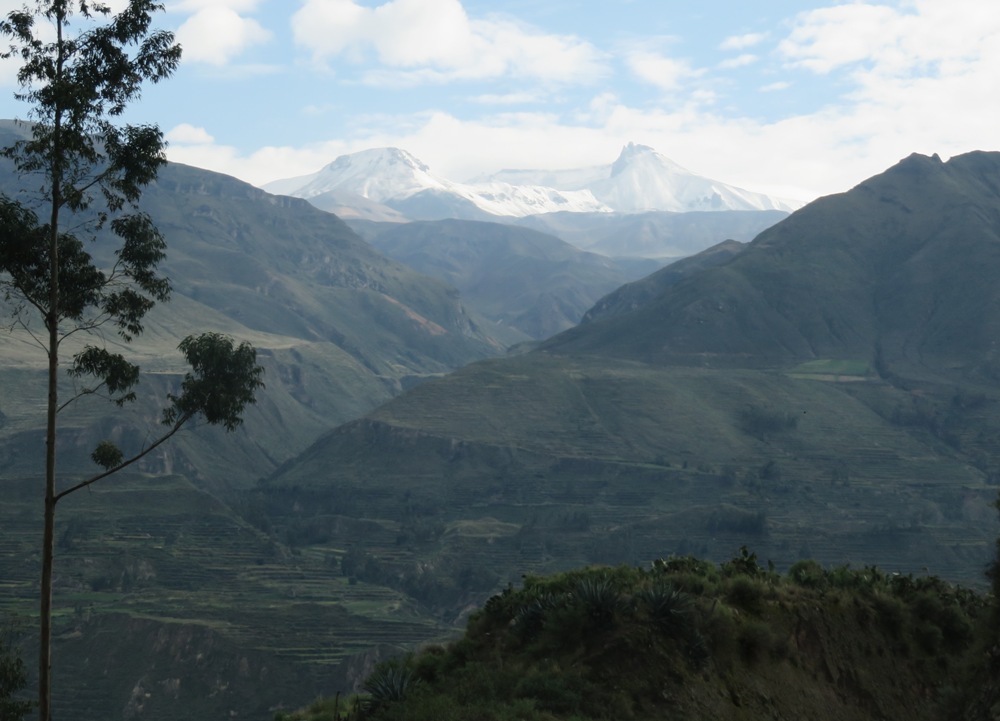
Colca Canyon view.
The Andean condor (Vultur gryphus) has a well-suited taxonomic name. It is in the vulture family and it could be mistaken for a gryphon. Although as we watched them come soaring up the canyon walls as the thermals started and then as time passed higher and higher following those same thermals, they seemed majestic not gruesome. They weigh up to 33 pounds (15 kilos) and have a wingspan of 10’ (3 m), thus they need help to get off the ground. They need the thermals and air currents generated nears coasts and these rugged areas, such as Colca Canyon, in the Peruvian Andes. They have a long life-span for birds and have been known to survive for 75 years in captivity, but they reproduce slowly. Reportedly they reproduce only every other year, if that, as they care for their single offspring for 1 full year, a long time in the world of birds. They mainly eat carrion, thus are critical “recyclers” or the garbage crew of the natural world. Watching them is captivating and a reminder of the complex natural world in which we live.
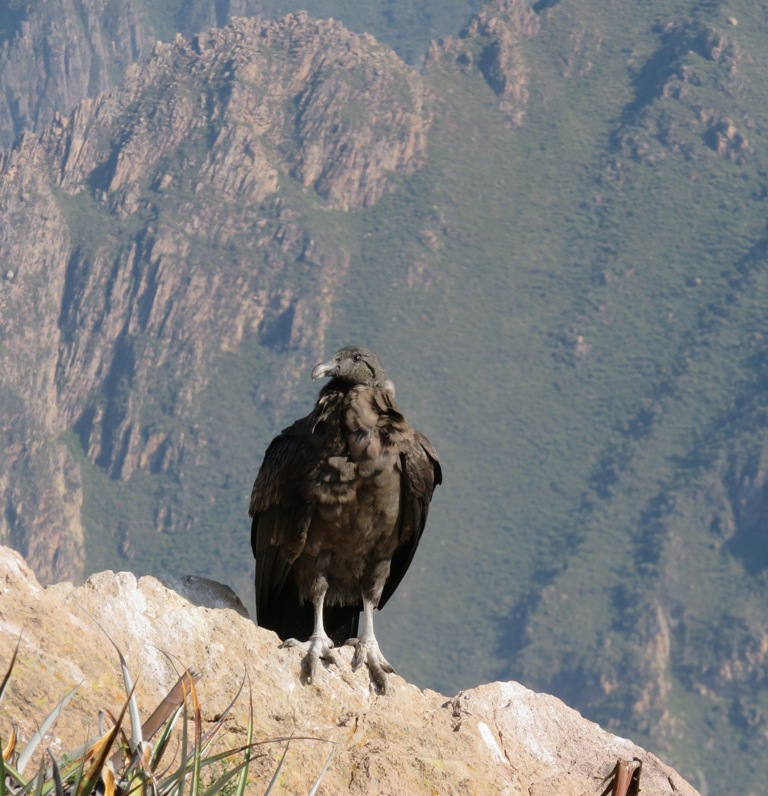
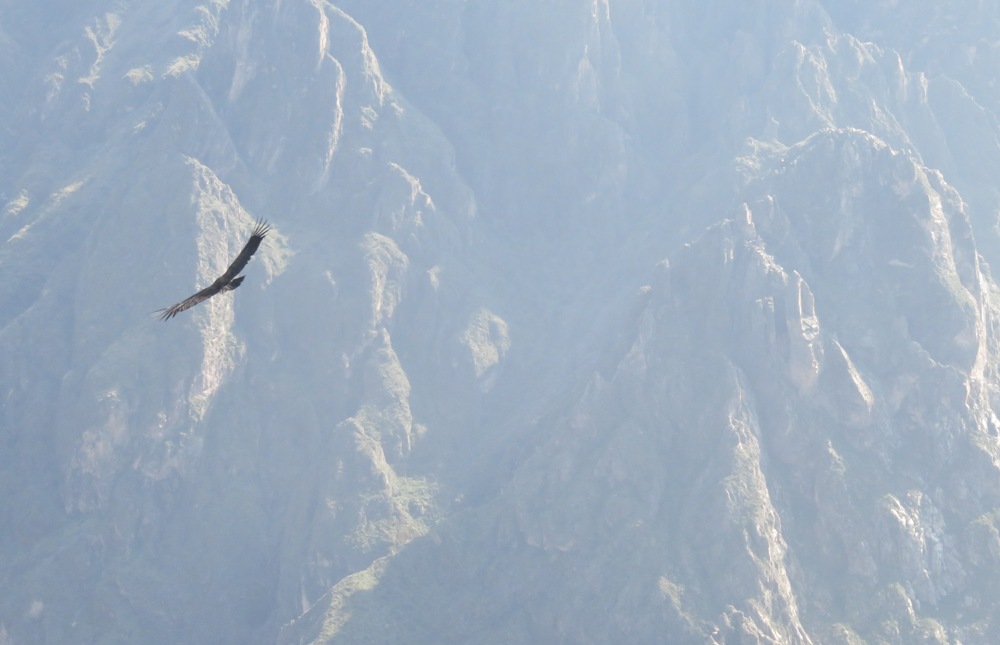
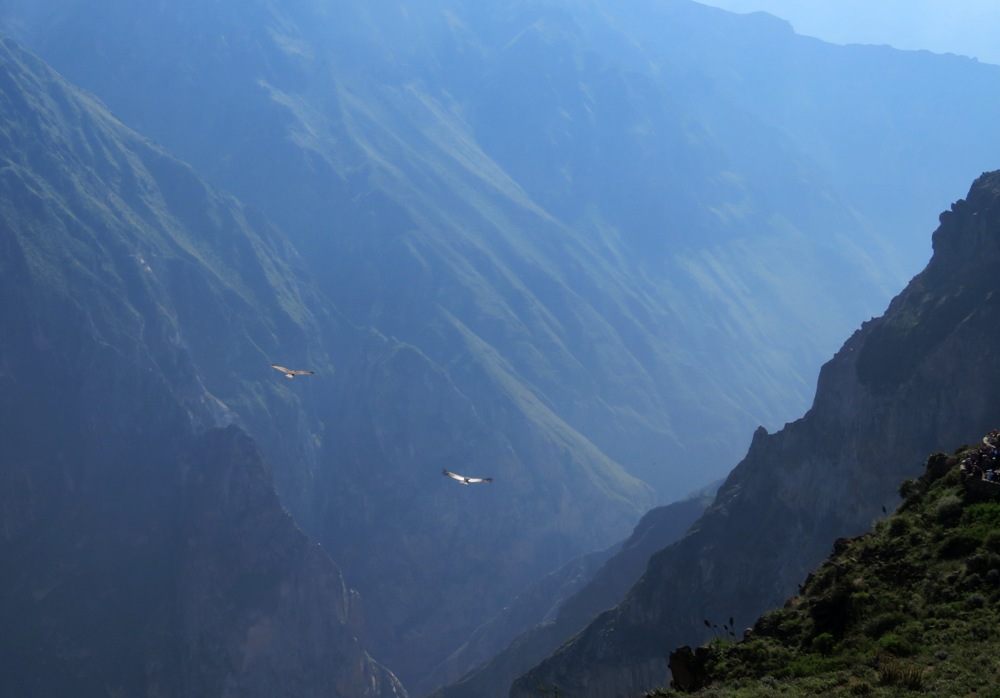
Three scenes of the Andean condors in Colca Canyon.
But condors aren’t the only birds in Colca Canyon. Check out this hummingbird in the photo below. Peru, in fact, due to its many ecological zones, is an excellent birding country.


A woman herding her sheep to pasture through the streets of Cabanaconde.
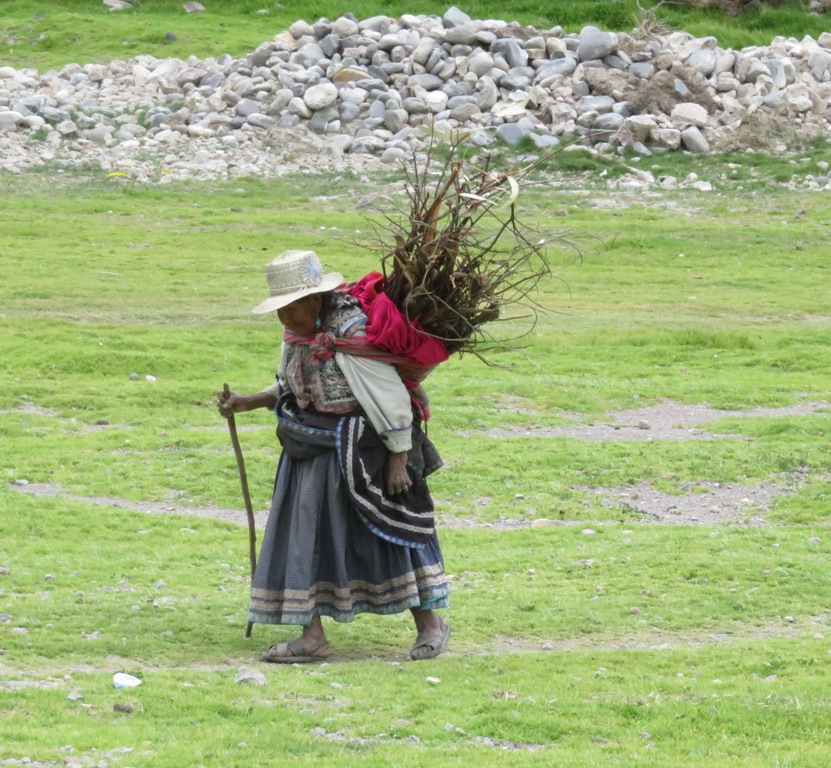
Another woman doing her daily chores on the rim of the canyon.
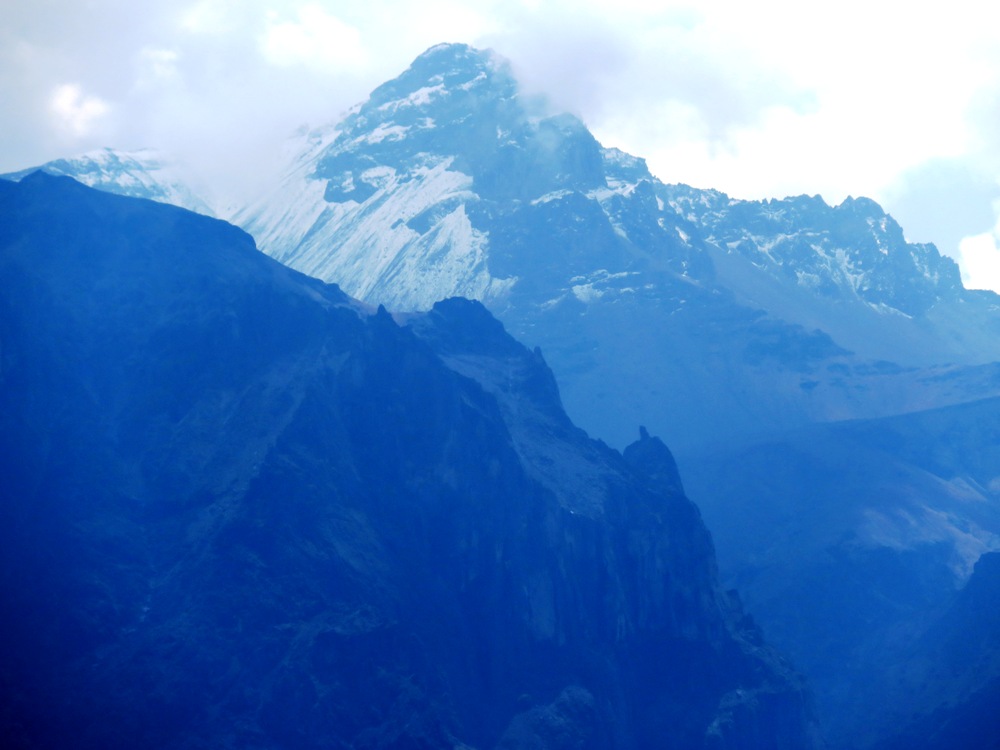
A haunting view of Colca Canyon.
TOURIST INFORMATION
Colca Canyon
You will need to buy a Boleto Touristico for this area, which can be purchased as you enter the area at the checkpoint or in Chivey if that’s where your transportation takes you. We highly recommend staying in Cabanaconde which is at the NW end of the canyon. The drive along the canyon top is very scenic. Seeing the Andean condors in the morning from about 8:15 to 9:30 a.m. (when we were there in April) is spectacular. It depends on the thermals when they are at eye level above the canyon from the view point, which is near Cabanaconde. It’s also an excellent base for trekking in the area. I’m not much for shopping but I did buy an alpaca wool hat at a stand in a little town on the way to Cabanaconde where the road turns sharply and there is an attractive church across from the stands, just pass this there is a small park with some amusing “local” statues. I don’t know the name of the town. It was quite reasonable, I think S/20.
We stayed at Hotel Kuntur Wassi, maybe a 3-star hotel, but a 5-star staff. Lovely setting, good meals, clean, comfortable. It was here that I recovered from my altitude sickness and learned to chew the coca leaves and not just use them for tea. I continued that regimen for the remainder of the time we were above 10,000’ and did just fine. The staff, especially Esther, were particularly caring and helpful. This is a much better location than Chivey for exploring the canyon and for viewing the Andean condors. We highly recommend it: arequipacolca.com
